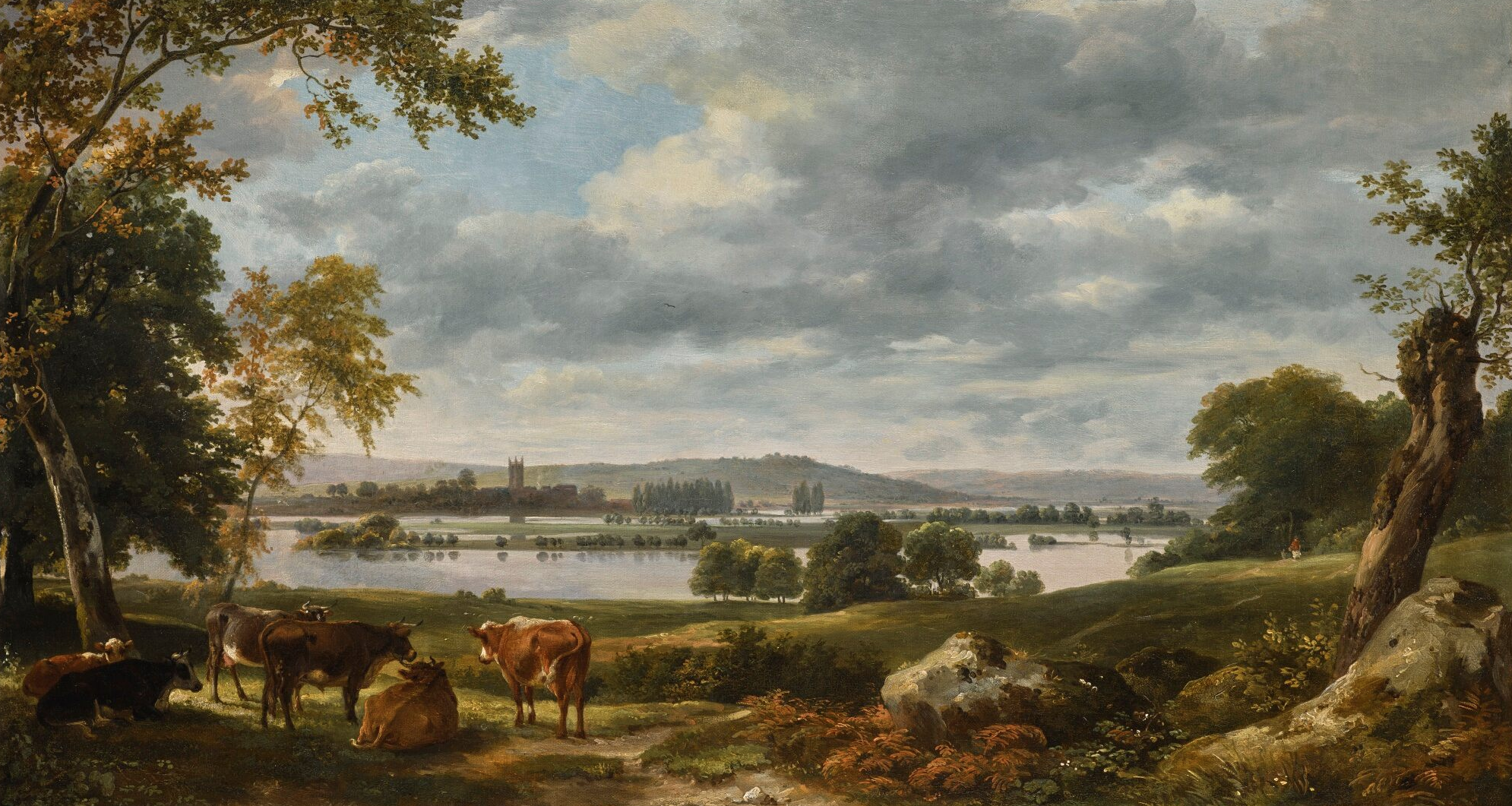Dedham Vale with the River Stour in flood from the grounds at Old hall
A view of the Stour in flood from the grounds of Old Hall, home of the Godfreys, friends and neighbours to the Constables.
- 45
- 1814-1817
- 51cm x 94cm
- Private collection
- Oil on Canvas
- 225
- Oil on Canvas, 1814-1817, 51cm x 94cm, Private collection
- Well Known
- 51.96908,1.01214
Details
Believed to have been painted between 1814-1817 and one of Constable’s early Suffolk paintings remaining in a private collection this was for many years it thought to be the work of Ramsay Richard Reinagle (1775-1862), a friend of Constable’s.
Constable was said to have used ‘a thousand greens’ to capture the complexity of nature’s beauty’, giving a sense of drama and for which he is considered one of the greatest landscape painters with his later work influencing the Barbizon School* and the French Romantic Movement.
*Barbizon – Around 1820 the village of Barbizon, Seine-et-Marne in north central France near the Fontainebleau Forest, was discovered by Jean-Baptiste Camille Corot, a well known French landscape and portrait painter at the time. He paved the way for other painters to come here to paint including Theodore Rousseau and Jean-Francois Millet who were both driven from Paris by poverty and lack of success.
Rousseau and Millet created The Barbizon School of painters, initially an informal group of artists active between 1830-1870 who would gather to paint in the forest of Fontainebleau. They attracted a large following of landscape and animal painters, some going to live at Barbizon, others only visiting.
Meanwhile in 1824 the ‘Salon de Paris’ (a famous art exhibition which ran in Paris 1740-1890) exhibited works of John Constable (The Hay Wain). His rural scenes greatly influenced some of the younger artists at the time moving them away from formalism to draw directly from nature, so during the French Revolution many painters gathered at Barbizon to follow Constable’s ideas and making nature the subject of their paintings. The French landscape became a major theme of the ‘Barbizon painters’, which over the years included many well known artists such as Claude Monet, Pierre-Auguste Renoir, Alfred Sisley, and even post-impressionist painter Vincent Van Gogh.
The inhabitants of the town even today are called ‘Barbizonais’, and the artists from that initial period are still now referred to as ‘Fontainebleaus’ by historians.
The school is still active and owes its fame to the 19th century landscape painters. It has been ‘twinned’ with East Bergholt for over 40 years.
Private collection
- 45
- 1814-1817
- 51cm x 94cm
- Private collection
- Oil on Canvas
- 225
- Oil on Canvas, 1814-1817, 51cm x 94cm, Private collection
- Well Known
- 51.96908,1.01214

